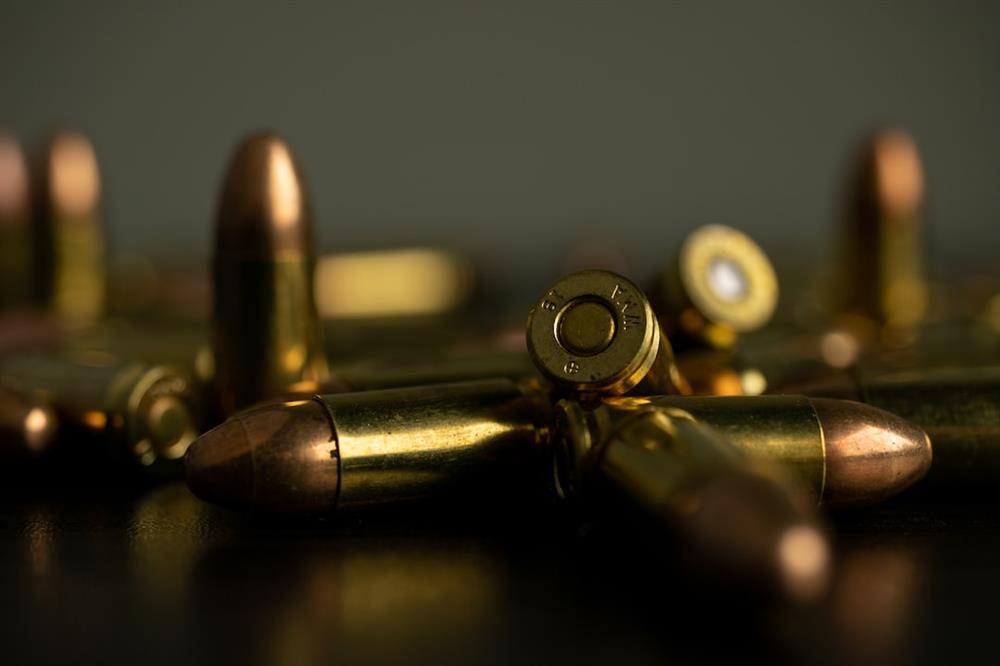9mm Ammo Types: What You Need to Know

The United States creates almost twenty-four million rounds of ammunition every day. There is plenty to go around, both for sport or other uses, and one of the most popular for personal use is the 9mm round. So, if you wanted to pick up some of these for yourself, would you know what you are looking for?
The thing you need to know is that there are many different 9mm ammo types for you to choose from. If you want to ensure you get the right ones for your needs, this article will help you find them. Below, we list many of the options you have and what makes them unique so you can find something that fits your mood.
Full Metal Jacket
This classic and famous form of 9mm ammo is well-known not only for its low cost but also for its appearance in the movie of the same name. These rounds neither expand nor flatten as they move through the air and hit the target. This means they can often impact deep into where they strike.
If you want to follow the example of the U.S. military, pick up some of these rounds as they are what you will find in their weapons.
The similar but not a FMJ round include the:
Flat nose. This has a blunted tip built for smoother damage to paper targets in sporting events.
Semi-wadcutter. Much like the flat nose, this has an even shorter tip for similar purposes.
Total Metal Jacket
When buying 9mm ammo, you need to know some of the intricacies of language. Despite the similar name, this round is distinct from the full metal jacket due to having a second coating of metal over the bullet itself. Some people claim this extra coating gives a small advantage in accuracy, though this is as-yet unproven.
The jacket can prevent any lead from the bullet from dispersing in the air. Though be aware, this extra layer can sometimes tear off the bullet as it travels through the weapon. This can cause damage, especially in guns with ported barrels.
Armor Penetrating Rounds
While these bullets have remained illegal in the United States since 1986, they do still exist. Do not expect to buy them anywhere, though.
These rounds project bullets that penetrate not only ballistic armor but also defensive shields. Even those used to protect against standard bullets.
These rounds often contain a much more dense bullet than usual. You might find bullets made of:
- Depleted uranium
- Hardened steel
- Tungsten
- Tungsten carbide
The intent in the design of such bullets is to use a very dense material that will carry more kinetic energy into the target. The rounds must also be dense enough to survive the impact and continue through the armor.
Blank Rounds
As this does not contain a bullet, they are among the more affordable 9mm ammo options. Although, this is because they are limited to making loud noises or seeing use in cinematic productions.
Blanks have a traditional cartridge for the round. However, instead of a bullet, they contain either paper or plastic that keeps the propellant inside. When fired, this propellant makes a loud noise, much like with other rounds.
You should be aware that the explosive expansion inside the firearm can still be deadly. So, do not fire blanks too close to another person, and maintain weapons safety at all times.
Brass-Enclosed Base
Instead of using different metals for both the bullet and the cartridge, these rounds coat the whole thing in brass instead. This can lead to less damage to the barrel over time, as well as reduced production of lead vapor when firing. Still, these needs are very niche, and brass-enclosed base rounds remain an uncommon sight.
Of course, you cannot get once-fired brass from a brass-enclosed base round due to the damage of impact. Still, they have their uses, usually for indoor firing ranges that do not want to see as much vapor in the air.
Defense Rounds
These rounds are intended to cause great harm. As they hit the target, defense rounds are quick to fragment or even expand. This means the area they hit will slow them down a lot faster causing more damage.
The main benefit of this is the increased damage to the targets. Although, if you have hit the wrong target, something is already not going as it should.
Jacketed Hollow Points
If you are looking to buy 9mm ammo, you should know this is the most common type of defensive ammo people buy. This is because it is both legal in most states, and using a "defensive" round such as this sounds good in court compared to more lethal rounds.
While these have a label of "defensive", they are still very deadly. This is due to their nature of ballooning outwards when they strike a target and causing a lot of damage where they hit.
Jacketed Soft Points
These do not balloon out like jacketed hollow points, but as the end of the bullet does not have a jacket, they still expand on impact. This can cause a large amount of damage but is less extreme than hollow points.
Dummy Rounds
These rounds are the correct shape and size for inserting into a weapon, though they do not have any powder in them. You will often also find them in a wide range of colors and materials, including plastic, to make it obvious they are not live rounds. However, at close range, they can cause damage and should never be fired at anyone.
They often see use in the practice of weapon handling or simulated weapon malfunctions. Though, they are good for replicating any other situations without using real rounds.
Frangible Ammunition
These bullets comprise a metal powder that manufacturers compress into a mold, producing a bullet-shaped mass of metal. On impact, these disintegrate, reducing the impact on any surface. They are often when one needs to reduce ricochets for any reason.
Incendiary Ammunition
The bullet in this round has a flammable material within that ignites on firing. The intent is that this causes more damage to the target after contact. Their bullet tips are often blue to allow you to see what they are at a glance.
Match Grade Ammunition
There is no single definition for "match grade" ammunition. In general, it is the term ammunition manufacturers use when they want to describe a specific stock of rounds as premium goods that are more precise than 'normal' rounds.
Non-Jacketed
These rounds contain bullets with no outer layer at all. They are made of plain lead and often leave lead behind in the barrel of the weapon you use them in. These are the least expensive rounds you can purchase and although many talk about barrel 'leading', leading is one of the easiest materials to clean out of your barrel.
Plastic Bullets
The name "plastic bullets" is somewhat of a misnomer. They are not the same as "rubber bullets", but very similar. Mostly used by LEO for crowd or riot control. They are considered non-lethal, however, they can still kill if used incorrectly.
Polymer Bullets
Polymer bullets are lead bullets with a Polymer or powder coating. This is to reduce the leading in a barrel that normal lead bullets cause. These bullets are easier to load and feed in the pistol magazine better than lead bullets. Normally these are less expensive than copper or brass coated bullets.
Rubber Bullets
The bullets in these rounds are often comprised of a metal center with a thick rubber coating to reduce the impact. Although, sometimes you may find some made of a composite of metal and rubber.
These often see use by law enforcement due to the need for non-lethal options during riot control. As such, people rarely buy them for their own use, though they work well as part of a diverse collection you might want to show off.
Capsule Shotshells
Instead of a solid single bullet, these have a capsule that contains several small pellets. They mostly see use in the world of pest control instead of self-defense, many call these 'snake shot'. Also, depending on the weapon you use, they may cause damage to its components, we recommend you do not use them in a weapon with a ported barrel.
Tracer Ammunition
Much like incendiary ammunition, these contain a flammable material that ignites when fired. The difference is the material does not burn for as long nor as fiercely, leading to less damage to the target. Instead, it makes it easier to see the bullet's flight path as it streaks toward the target.
Some believe this to be the best 9mm ammo for use during the night when seeing the path of your bullet is both useful and entertaining for others.
Learn More About 9mm Ammo Types
The above should sate any need you might have to learn about 9mm ammo types in the near future. You might now have a very good idea of which you want to pick up. We are in the market to help you out.
We sell ammunition, components, and several other products you might be in the market for. We even have a vibrant used and discontinued section for those looking for rarer pieces. So, check out our shop and find something that fits your needs today.

